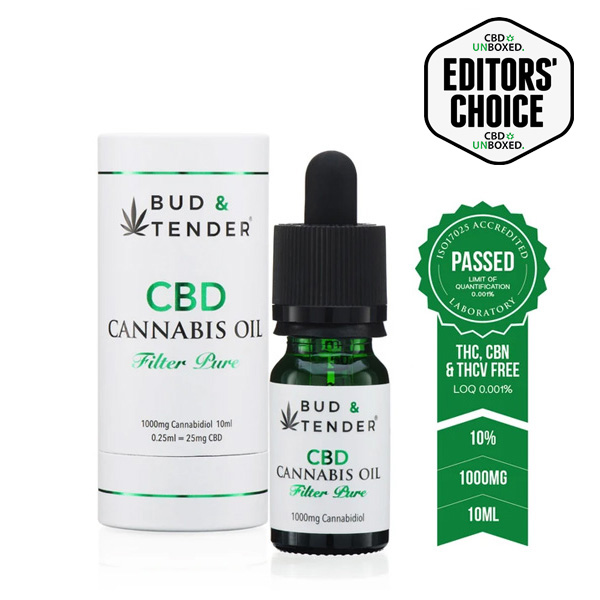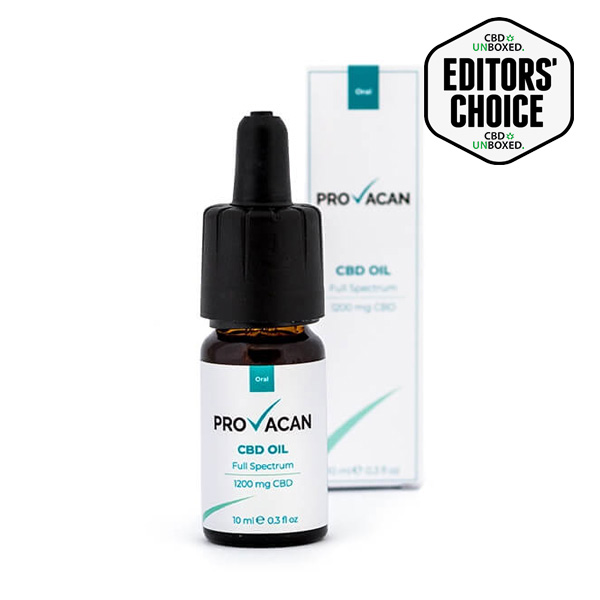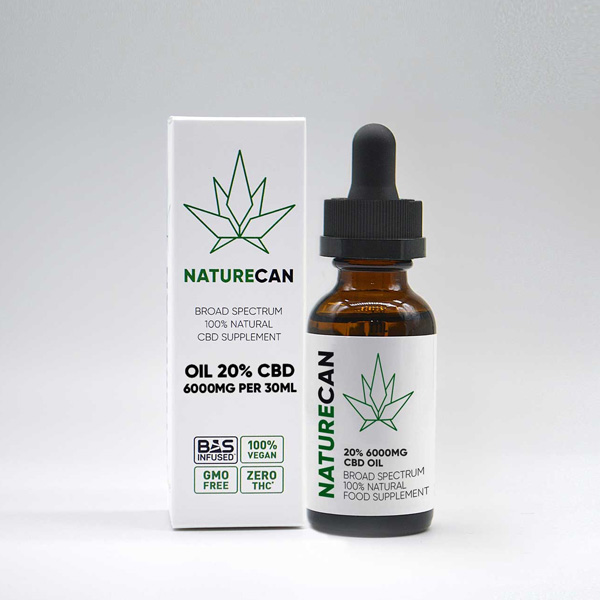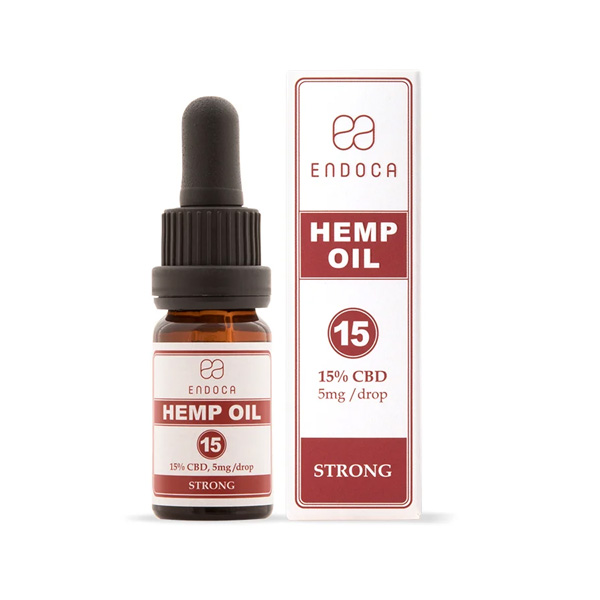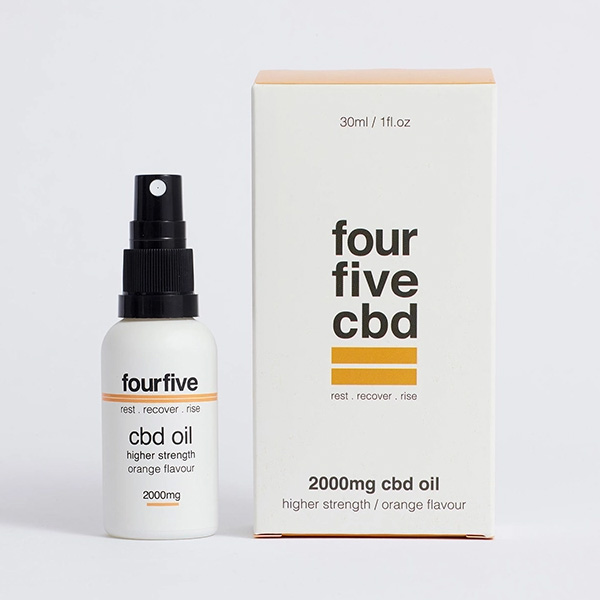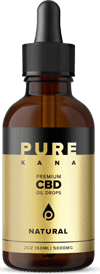New to CBD and suffering from epilepsy? This guide will help you understand how CBD could help you reduce the frequency and severity of your seizures. We also list the Best CBD Oils for Epilepsy and Seizures at the end of this article.
CBD for Epilepsy – The Ultimate Guide
According to Epilepsy.org.uk, around 600,000 people in the UK live with epilepsy. That’s one in every 100 people in the UK, which is broadly speaking a similar figure to people leaving with an autism spectrum disorder (700,000 people).
While more scientific research is still required to better understand the link between CBD and the reduction of the frequency and intensity of epileptic seizures, a large number of scientific studies and research papers have already been published to back the role that CBD plays in fighting seizures, especially in young children.
Choosing CBD, a popular product made from hemp extract (cannabis plant), is a natural way to manage the frequency and intensity of epileptic seizures, without any of the major side effects of traditional epilepsy medication. It also helps counteract some of the side effects of epilepsy medication such as nausea and vomiting.
In this article we discuss the benefits of CBD oil for epilepsy based on research papers and peer-reviewed studies. We explain how CBD oil can help reduce the frequency and intensity of seizures and provide links to purchase high quality CBD oils we’ve tried and tested.
Take our CBD Quiz
If after reading this guide you are still unsure about what products to choose, simply take our CBD Quiz which has been designed specifically to identify the product and strength that is best suited to your personal needs.
CBD has been proven to help reduce the frequency and intensity of seizures in epileptic patients, and may also counteract some of the side effects of traditional anti-epileptic dugs.
What is CBD?

Cannabis (or Marijuana) and hemp are the same plant and come from the Cannabaceae family. Both plants are filled with organic compounds known as “cannabinoids”. Hemp has over 112 different cannabinoids, all of which have their own health benefits.
The main two cannabinoids or compounds of the hemp plant are THC (also known as “Tetrahydrocannabinol”) and CBD (also known as “Cannabidiol”).
THC is the compound known to give cannabis smokers this feeling of “high” and is currently illegal in the UK.
CBD on the other hand, contains none of the psychoactive properties associated with THC (meaning it won’t get you “high”) and is completely legal in the UK. It is also non-addictive and has been suggested to have several medical benefits. Some of these benefits include reducing anxiety and depression, improving sleep and insomnia, reducing pain and inflammation, as well as helping with stress or neurological disorders.
These benefits are possible because CBD interacts with your “Endocannabinoid System” (ECS), which essentially monitors and regulate key functions of your body such as your heat level, your food intake, your hormone levels and so on. When your ECS detects that something is operating outside of what it considers to be its “normal range”, it activates to bring things back to its baseline. If you are exercising and become too hot, your ECS activates and makes you sweat to bring your temperature down. If you need more calories for your body to keep performing (for example running) but you aren’t feeding it, your ECS may start redirecting the energy available towards vital organs such as the heart and brain, leading to a drop in physical performance.
The term Endocannabinoid can be broken down into two parts:
- Cannabinoid: which comes from Cannabis
- Endo: which is short for “Endogenous” and means that it is naturally produced by your body.
So endocannabinoid simply means that your body naturally produces cannabinoids, and does so thanks to cannabinoid receptors present in the body, which fall under two categories:
CB1 Receptors

CB1 receptors, which are located in various regions of the body, with a large concentration in the brain and the nerves of the spinal cord, co-ordinate mood, emotion, appetite, and other functions.
CB2 Receptors

CB2 receptors are more commonly found in the immune system and are responsible for controlling inflammation and pain. CBD stimulates these receptors and induces the body to release serotonin.
Serotonin, or 5-HT, is a neurotransmitter that carries signals from one neuron to the other. CBD increases the level of serotonin, which, in return, helps reduce pain, reduce inflammation in the body and possibly reduces the cramping experienced during period pain.
Whilst there are very few differences between “Marijuana” and “Hemp”, the main difference is simply legal and linked to the level of THC that is present in the plant. So different parts of the cannabis plant are either defined as hemp or as cannabis / marijuana.
- Hemp: hemp is the stalks, stems and sterilized seeds of cannabis sativa (“Cannabis Sativa” is the scientific Latin term that defines hemp, cannabis or marijuana plant species)
- Cannabis and Marijuana: the leaves, flowers and viable seeds of cannabis sativa
The varieties of cannabis that are regulated, legal and available in the UK are those that produce less than 0.2 percent THC. And given the fact that most THC is in the flowers, CBD products are primarily made from hemp (stalks, stems and sterilized seeds of cannabis sativa) which contain very little THC and are safe to consume.
There has been a lot of interest in CBD from both the research and medical community over the last few years, due to its range of health applications – including but not limited to pain relief, fighting the side effects of cancer medications, alleviating insomnia, lowering stress levels, improving acne outbreaks, counteracting heat disease, or reducing seizures in patients with epilepsy
For all these reasons, CBD products are legal in the UK if they contain less than 0.2% THC and as long as they are advertised as a health supplement and not a medication.
Products containing CBD come in many different forms, with the most common including CBD oils, CBD gummies, CBD capsules, CBD vapes and CBD edibles. Some forms are more fast-acting than others, some have different flavours, some contain differing proportions of CBD extract, and so on, so the type you choose depends entirely upon your personal preferences and the condition you wish to treat.
Here’s what you need to know about using CBD for epilepsy and seizures.
Epilepsy: What You Need to Know
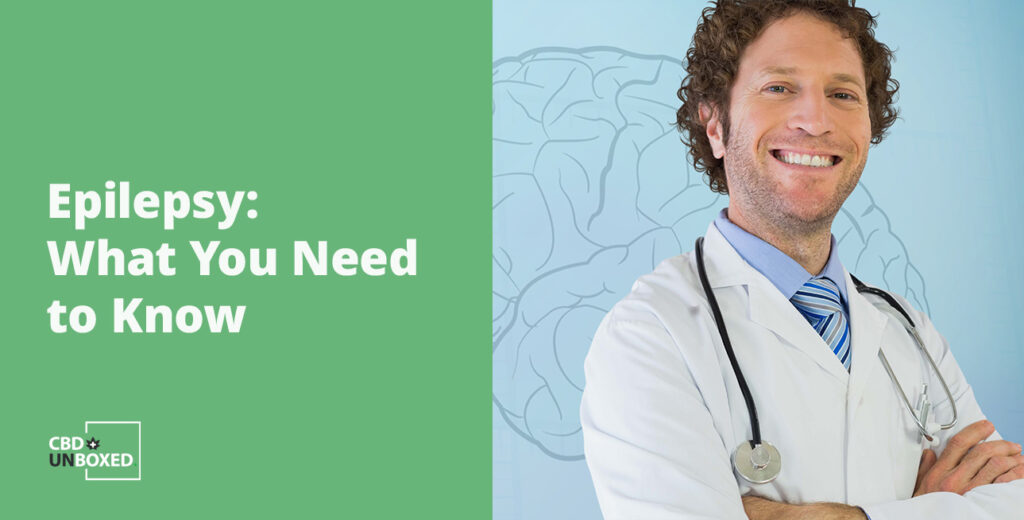
Epilepsy is a serious neurological condition which can affect people at any point in their life. It affects 1 in every 100 people in the UK, with 1 in every 4 people newly diagnosed with epilepsy being over the age of 65.
Epilepsy is characterised by seizures (sometimes referred to as ‘epileptic fits’ or ‘epileptic seizures’) which affect the entire body and are caused by uncontrolled and excessive electrical activity between brain cells (also known as neurons or nerve cells). According to Epilepsy.org.uk, 52% of people with epilepsy in the UK are seizure free. It is estimated that with the right treatment, the majority of people with epilepsy (70%) could be seizure free.
It is not yet known why these bursts of electrical activity in the brain, comparable to electrical storms, happen, but people diagnosed with epilepsy appear to have different triggers and experience different symptoms depending on the type of seizure they have and what part of the brain the burst of electrical activity is involved. Outside of these epileptic seizures, the brain functions normally.
With over 40+ different types of seizure, it is not surprising to see that epilepsy is a variable condition which affects people in may different ways. Whilst the tonic-clonic seizure, also known as ‘grand mal seizure’, is the most well known type of seizures as it involves a loss of consciousness, falling to the ground and muscle jerking, other types of epileptic seizures may only involve rapid blinking or staring into space for a few seconds.
Seizures are classified into two main categories – generalised and focal seizures – and can strike at ay time of the day or night. A seizure happening to a person that is awake is called an ‘awake seizure’, whilst a seizure happening whilst they are asleep is called an ‘asleep seizure’. Both generalised and focal seizures can happen during the day or at night.
Generalized Seizures
Generalised seizures are caused by an imbalance in the inhibitory circuits (the ‘breaks’) and excitatory circuits (the ‘accelerator’) resulting in surges of electrical activity throughout the cortex of the brain> they are called generalised as they affect both sides of the brain. The main types of generalised seizures are:
- Absence Seizures: also known as ‘petit mal seizures’, can cause rapid blinking or staring into space for a few seconds.
- Myoclonic Seizures: this type of seizure consists of sudden body or limb jerks that will usually involve the head, neck and arms. The involuntary limb jerking occurs on both sides of the body in clusters, meaning that both arms may start shaking at the same time during an episode.
- Tonic-Clonic Seizures: also referred to as ‘grand mal seizures’, is the most well known type of seizures as it involves a loss of consciousness, falling to the ground and muscle jerking. Due to the intensity of tonic-clonic seizures and the fact that they involve the entire body, a person may feel extremely tired after an episode.
Focal Seizures
Focal seizures are also called partial seizures as they start in a specific area, on one side of the brain. About 50% of people who suffer from focal seizures will have some sort of brain injury (in a specific area of the brain) which has left some sort of scar mass in the brain, whilst most children suffering from focal seizures will have development scars which have occurred as part of fetal or early growth of the brain. The main types of focal seizures are:
- Simple Focal Seizures: this type of seizure only affects a small part of the brain (on one side) and will usually cause some sort of physical response such as twitching or may affects a person’s sense of taste or smell.
- Complex Focal Seizures: this type of seizure only affects one side of the brain, but will usually have a more profound impact on the person and often leave them confused or in a daze. During a complex focal seizure, the person will usually be unable to respond to questions, from a few seconds to several minutes.
- Secondary Generalised Seizures: this type of seizure starts as a simple or complex focal seizure (one side of the brain), but then spreads to both sides of the brain to become a generalized seizure.
How is Epilepsy Diagnosed?
People who experience a seizure and suspect it may have been an epileptic seizure, will first need to go to their GP who will review your symptoms and medical history to rule out other conditions, such as fainting, migraines and panic attacks, which may have similar symptoms and can be confused with epilepsy.
If your GP wants to investigate things further, they will refer you to a neurologist specialized in conditions affecting the brain and nerves.
The neurologist will first request your medical history and ask you to describe what you remember about your seizure. This will include things such as what you were doing before the seizure started, how you felt before, during and after it happened, what you ate that day or in what emotional state you were. If someone was with you when you had the seizure, they may also ask thm to provide an account of what they saw as some people may not remember anything that happened to them during an episode.
Your neurologist will also order several tests to diagnose epilepsy and more importantly to determine the cause of your seizures. It is likely that they will ask for a wide range of tests to rule out any other potential conditions. Some of the tests will include:
- Blood tests: blood sample will be used to check for signs of infections, genetic conditions or other conditions that may be associated with seizures.
- Neurological tests: to test your behavior, motor skills as well as mental function to diagnose your condition and determine the type of epilepsy you may have.
- Electroencephalogram: also known as an EEG, is the most common test used to diagnose epilepsy. By placing electrodes on your scalp and recording the electrical activity in your brain, the neurologist will be able to see if there are abnormal patterns. The first set of tests will usually happen at the hospital in an EEG machine, but your neurologist may also ask you to wear an ambulatory EEG at home for 24-72 hours to record electrical activity in your brain over a few days – both duringthe day and at night.
- High-density EEG: In some cases, your neurologist may request a high-density electroencephalogram, which is similar to an EEG but with the electrodes being at much closer intervals. This is to increase the precision of the test and pinpoint the exact area of your brain affected by seizures.
- Computerized tomography (CT scan): As many patients suffering from seizures do so because of abnormalities in the brain such as brain injury, tumors, bleeding or cysts, your neurologist may ask you to take a CT scan, which works like an X-ray to obtain cross-sectional images of your brain.
- Magnetic resonance imaging (MRI scan): If the CT scan has not revealed anything, you may be asked to take an MRI scan which uses magnets and radio waves to create a detailed computerised representation of your brain. MRI scans are usually used to detect lesions or abnormalities in the brain.
Whilst these are the main tests that your GP or neurologist may request, be aware that epilepsy can sometimes be difficult to diagnose and that other tests such as functional MRI, PET scan (Positron Emission Tomography) or SPECT scan (Single-photon emission computerized tomography) may need to be carried out.
Finally it’s worth noting that epilepsy is normally only diagnosed after at least two unprovoked seizures of unexplained origin.
What Causes Epilepsy?
It is not always possible to identify the cause of epilepsy. In the UK, about half the people with the condition have not been diagnosed with a specific cause or origin, whilst for the other half, it may be linked to several factors, including:
- Head trauma: Head trauma, such as a car accident or a head collision whilst playing sports such as football, can cause lersions or abnormalities in the brain and cause epilepsy.
- Your genes: In some specific cases, your genes may put you at risk. According to a study from 2014, a person who has a first-degree relative (mother, father, sibling) with epilepsy, has less 1 in 20 chances of developing epilepsy by the age of 40.
- Brain conditions: Brain conditions such as brain tumors or strokes may cause damage to the brain. A person who had a haemorrhagic stroke (bleed on the brain), a severe stroke or a stroke in the cerebral cortex (where vital functions take place) are more likely to have a seizure afteward.
- Infectious diseases: Infectious diseases such as meningitis or viral encephalitis can cause impact the central nervous system and cause both seizures and epilepsy.
- Prenatal injury: children suffering from focal seizures will have development scars which have occurred as part of fetal or early growth of the brain.
- Developmental disorders: development disorders such as autism and neurofibromatosis can also lead to epilepsy. The co-occurrence of autism and epilepsy is almost certainly the result of underlying factors predisposing to both conditions, including both genetic and environmental factors.
Complications Linked to Epilepsy
Whilst medication may help relieve some of the symptoms of epilepsy, including seizures, the consequences of an epilepsy diagnosis are severe and wide-reaching.
People with epilepsy will often experience changes in their quality of life and will may suffer from mental health disorders. This may include a low self-esteem, less mobility since an epilepsy diagnosis may result in the loss of a driving licence, loss of employment, difficulties learning or studying, a sense of social isolation as well as increased stress and anxiety which can lead to depression.
In some very rare cases, seizures can also be life threating. Every year, around 1,000 people in the UK die from causes related to their epilepsy. This could be as a result of:
- Falling: a bad fall during a seizure can lead to a head trauma or bone injuries.
- An Accident: if a seizure occur whilst you are driving, an accident may occur if you lose control of the vehicle or cannot stop in time. This is why many patients with epilepsy often lose their driver’s licence.
- Drowning: people with epilepsy are 15 times more likely to die while swimming or taking a bath than the rest of the population.
- Status Epilepticus: In some rare cases, if a seizure activity lasts too long or if someone has multiple seizures in a row without the opportunity to recover in between, they may have permanent brain damage which could lead to death.
- Sudden Unexpected Death in Epilepsy: also referred to as SUDEP, is when a person’s heartrate or breathing stop due to the intensity and duration of the seizure. This is more common in people who suffer from tonic-clonic seizures and those not under any epilepsy medication.
According to Public Health England, deaths in people with epilepsy have increased by 70% and people with the condition now die on average eight years earlier than the rest of the population.
Side Effects of Anti-Epileptic Drugs (AEDs)
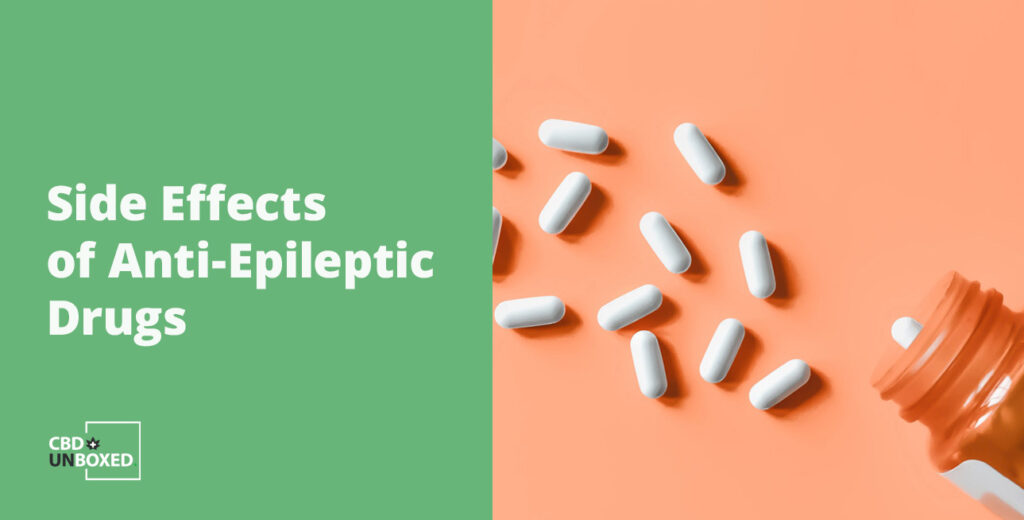
While there is no treatment guaranteeing people diagnosed with epilepsy to live the rest of their life seizure-free, a number of options exist to help them reduce the frequency and intensity of their seizures. Medical professionals will usually opt for epilepsy medication, also known as anti-epileptic drugs, but the treatment type will usually depend on the patient’s age, condition and diagnosis.
Anti-Epileptic Drugs (AEDs)
The most common is anti-epileptic drugs. Also known as AEDs, this type of medication is usually prescribed for everyday seizure control.
Drugs such as Clonazepam are used for all forms of epilepsy, Brivaracetam is used for focal seizures with or without secondary generalisation and Carbamazepine is used for focal and secondary generalised tonic-clonic seizures as well as primary generalised tonic-clonic seizures.
However the possible side effects of AEDs are not to be ignored. These will depend on the type of AED prescribed, but will usually include:
- Drowsiness
- Dizziness
- Fatigue, lethargy or sleepiness
- Nausea and vomiting
- Increased appetite
- Diarrhea
- Sleep disorders and insomnia
- Skin rash
- Vision changes such as blurred vision
- Headaches and migraines
- Loss of balance
- Hyperactivity
- Vertigo
- Muscle spams and tremors
Other anti-epileptic treatments include:
- Resective surgery: is the most common epilepsy surgery and involved the removal of a small portion of the brain where seizures occur, usually the site of a brain injury, tumor or malformation.
- Electric stimulation: electric stimulation is achieved by inserting a small electrical device inside the brain. The device monitor the electrical activity in the brain and help control seizures through electrical stimulation.
- Ketogenic diet: the ketogenic diet is a high-fat, low carbohydrates diet. It has been used with relative success in children with seizures who did not respond to anti-epileptic medication.
Antidepressants
Epilepsy, anxiety, and depression often coexist in a significant number of patients, with a recent study highlighting the fact that as much as 55% of people with epilepsy suffering from depression. It’s therefore not surprising to see that the use of antidepressants and anti-anxiety medications is common in patients with epilepsy.
Antidepressants usually fall under one of two categories:
- SNRIs: Serotonin and noradrenaline reuptake inhibitors, also known as SNRIs, are used to treat major depression and associated mood disorders. They work by raising the levels of serotonin and norepinephrine, two neurotransmitters in the brain that play a key role in stabilizing mood.
- SSRIs: Selective serotonin reuptake inhibitors, also referred to as SSRIs, are also used to treat depression and are one of the main antidepressants prescribed today. SSRIs work by blocking the absorption of serotonin in the brain to facilitate the sending and receiving of messages by brain cells which results in better and more stable mood. SSRIs tend to have fewer side effects than other antidepressants and are therefore a popular medication to treat patients suffering from depression.
Not only do these antidepressants have a substantial time lag to induce therapeutic response, meaning that several weeks of treatment are necessary to generate a positive response, but their overall efficacy also remains quite low with a third of patients not responding to the treatment itself. More worryingly though, they come with a long list of side effects which shouldn’t be ignored:
- Low blood sugar (hypoglycaemia)
- Nausea and vomiting
- Constipation or diarrhoea
- Weight loss
- Low sodium
- Skin issues such as rashes
- Dry mouth
- Excessive sweating
- Muscle issues such as tremors
- Low sex drive and sexual dysfunction
- Insomnia
- Migraines and headaches
- Anxiety
- Agitation and abnormal thinking
In children and teenagers, there also seems to be a link between antidepressants and suicidal thoughts.
According to a recent analysis of short-term placebo-controlled trials of antidepressants carried out in the US, including SSRIs, in children and teenagers, suffering from major depressive disorder, known as MDD, the average risk of suicide during the first few months of treatment was 4%, twice the risk of the placebo group which stood at 2%.
The second aspect to consider when looking at antidepressants is the fact that patients taking SNRIS or SSRIs can become addicted to them. This addiction is mainly linked to the physical dependence an individual may develop regarding the drug, meaning that they may experience withdrawal symptoms such as headaches, nausea, vomiting and tremors if they were to suddenly stop taking the drug.
CBD Can Help Epileptic Patients

Although people have been using herbal remedies for sleep, anxiety, or pain for centuries, it wasn’t until the last few years that hemp’s legal status changed, allowing more people to benefit from its many health related benefits.
Cannabidiol, the scientific name for CBD, on the other hand is a naturally occurring compound coming from the hemp plant. There is extensive research on the effectiveness of CBD oil when used to treat depression, anxiety, stress, insomnia or seizures.
When it comes to epilepsy and seizures, the main properties of CBD include:
- Seizure prevention: CBD can reduce the frequency and intensity of seizures
- Seizure triggers: CBD can also help with aspects of day-to-day life that may be act as ‘triggers’ for epileptic patients, such as stress or poor sleep.
CBD Can Prevent Seizures

CBD appears to have neuroprotective and anticonvulsant properties, meaning that it helps protect nerve cells against damage and helps prevent or reduce the severity of epileptic fits or other convulsions.
This is particularly interesting for patients suffering from neurological disorders such as multiple sclerosis, epilepsy or children with Dravet syndrome.
Researchers believe that CBD can act on the ECS (the endocannabinoid system) as well as other brain signalling systems to provide benefits to those patients and early studies show promising results.
When it comes to MS (multiple sclerosis), an oral spray called Sativex and consisting of CBD and THC has been proven to be an effective way to reduce muscle spasticity (muscle spasms) in patients. The study found that Sativex reduced spasms in 75% of patients with MS who were experiencing muscle spasticity and for which traditional medications were not working.
When it comes to Epilepsy and according to the Epilepsy Society, medical cannabis has been proven to reduce the number of seizures in patients suffering from epilepsy.
Three separate double-blind randomised controlled trials of pure CBD (CBD isolate) in children and young people with epilepsy have shown a reduction in the number of monthly seizures experienced by patients compared to those that received placebos. Additional studies have shown that it may also have an anti-epileptic effect in the epilepsies in general, not just in children and young adults.
As for patients suffering from Dravet syndrome, a complex epilepsy disorder experienced by children, it was found that children with severe epilepsy who were given between 0.9–2.3 grams of CBD oil per pound of body weight, saw a median reduction of their seizures of 36.5%.
CBD & Seizure Triggers: Stress + Sleep
When it comes to seizures, some patients have ‘triggers’, which are things or events that make seizures more likely. Not all people with epilepsy have seizure triggers, and triggers may affect some patients but not others. Two of the most common triggers are stress and not sleeping well.
The good news is that CBD can also help with these triggers.
CBD Can Reduce Stress
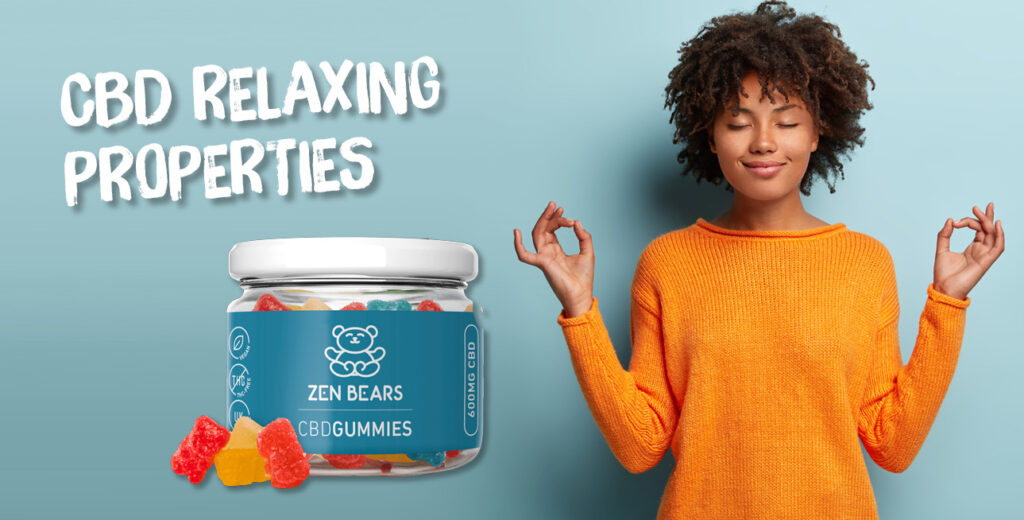
There is extensive research on the effectiveness of CBD oil when used to treat stress and anxiety since CBD has broad therapeutic properties across a range of neuropsychiatric disorders, stemming from diverse central nervous system actions.
In recent years, CBD has attracted increasing interest as a potential anxiolytic treatment (to treat stress and anxiety).
CBD is believed to interact with specific receptors, specifically the CB1R and CB2R.
CB1 receptors co-ordinate mood, emotion, appetite, and other functions. While CB2 receptors are responsible for controlling inflammation and pain. CBD stimulates these receptors and induces the body to release serotonin.
Serotonin, or 5-HT, is a neurotransmitter that carries signals from one neuron to the other. CBD increases the level of serotonin, which, in return, helps relieve stress and other medical conditions.
Whilst more research needs to be carried out to determine the impact of CBD on stress and anxiety disorders, a number of studies have already been carried out on the matter.
According to a double-bind 2010 study, subjects were either given 400mg of CBD or a placebo.
The results suggest that CBD reduces anxiety in SAD (social anxiety disorder) and that this is related to its effects on activity in limbic and paralimbic brain areas. Similar results were observed in another study conducted almost a year later.
A 2014 study shows that CBD acts similarly to ant-depressants and helps relieve stress in general.
Another study in 2018 saw CBD help with pain, anxiety, depression, and sleep disorders. According to the same study, the researchers claim to have just scratched the surface. The true potential of CBD oil is still unknown.
CBD Can Improve Your Sleep

A poor night’s sleep may be a seizure trigger for some patient with epilepsy, but CBD may be able to help as there is extensive research on the effectiveness of CBD oil when used to relax the mind and improve sleep.
CBD works with the human body to increase calm, decrease stress, and lower anxiety levels. These responses indirectly improve your sleep. In the 1990s, researchers confirmed the body has an endocannabinoid system or ECS. Researchers have only found a link between the cannabinoids found in hemp with the ECS, making it an unusual reaction.
The ECS is a complex cell-signalling system consisting of endocannabinoids, cannabinoid receptors, and enzymes. Scientists believe it plays many roles, including maintaining balance in the body. When it comes to sleep, the ECS helps regulate sleep and sleep cycles. Also, relating to sleep, a potential function is boosting anandamide to reduce depression and anxiety.
The cannabinoid receptors interact with endocannabinoids and cannabinoids. The CB1 is located in the nervous system and brain. Additionally, the CB2 is found mostly in the immune system and most organs.
A recent surge in scientific publications has found preclinical and clinical evidence documenting value for CBD in some neuropsychiatric disorders, including epilepsy, anxiety, and schizophrenia. Evidence points toward a calming effect for CBD in the central nervous system.
In 2019, a large case series was published in the Permanente Journal about CBD’s calming effects on the central nervous system. The studies showed patients taking CBD saw lower anxiety levels, experienced less stress, and slept better at night. Additionally, most participants experienced no or few side effects.
So through its calming effect, CBD may help people with epilepsy get a better night’s sleep and reduce the frequency and intensity of their seizures by suppressing their seizure trigger.
CBD: The ‘Entourage Effect’

Now that you know how CBD can help you manage your pain, it is important to understand the concept of ‘entourage effect’.
The entourage effect is the theory that while each botanical compound has a unique role or benefit, its behaviour may change when the presence of another compound is present.
For example, it would be more effective and quicker to produce a play with a team of actors rather than one actor playing all the parts. When each actor has a specific role to focus on, they can learn their lines and direction and support their fellow actors. But one actor alone will take a lot longer to learn all the lines for the various parts they have to play.
This is similar to the entourage effect. Essentially, everyone knows their role, but their performance can be enhanced by comradery.
But how is this applied to CBD?
CBD Entourage
We know that CBD products stimulate the endocannabinoid system and make it work more efficiently. But different CBD products affect the ECS differently, depending on their formulation. As previously, discussed there are 3 types of CBD formulation:
- Full-spectrum: No additional extraction, contains all the natural ingredients of the hemp plant, including CBD, THC, terpenes and flavonoids.
- Broad-spectrum: All traces of THC are removed from the oil. Every other ingredient remains.
- CBD Isolate: The oil only contains CBD, everything else is removed.
One of the above formulations has been proven to give better results in reducing pain, inflammation and many other symptoms. Which one of these formulations do you think stimulates the ECS best?
Would it be the most natural substance (full-spectrum), the one with any psychoactive ingredients (broad-spectrum) or the purest form of CBD (isolate)?
According to the entourage effect, it is the full-spectrum CBD because it keeps all the natural components of the hemp plant, which include:
Cannabinoids and Terpenes
The theory of the entourage effect was first introduced by Dr Ethan B. Russo. He thinks that cannabinoids such as CBD and THC work with terpenes (aromatic component) to produce a “synergy.”
In his study “Taming THC: Potential cannabis synergy and phytocannabinoid-terpenoid entourage effects” (2010) Dr Ethan B Russo suggests:
- The terpene pinene, which gives the scent of pine, may help counteract compromised memory caused by THC.
- CBD and terpene limonene, which gives a citrus scent, might work together to alleviate anxiety.
- A combination of CBD and terpene caryophyllene, offering a pepper smell, may be beneficial in the treatment of addiction.
The possibility of “synergy” of endless but have not yet been categorically proven. For more information read his other study “The Case for the Entourage Effect and Conventional Breeding of Clinical Cannabis: No “Strain, No Gain” published in 2019.
Omega-3, Antioxidants and Nutrients
In addition to CBD, THC and terpenes, full-spectrum CBD oil also contains Omega-3, which is vital to the ECS. Omega-3 is used to maintain the receptor CB1, which regulate pain and memory.
It also aids the absorption of external cannabinoids, as well as making endocannabinoids internally.
Other nutrients and antioxidants have also been discovered in full-spectrum CBD oil, for example, Vitamin E. Vitamin E is a fat-soluble compound that can prevent cataract formation, postpone the appearance of wrinkles and grey hair, boosts the immune system and reduces inflammation.
As you can see CBD oil when first extracted from the hemp plant has a huge list of ingredients. All of them seem to play a part in helping our bodies. We may not know exactly what they all do. But as time passes and research continues, we can learn more.
Is CBD Legal in the UK?

CBD oil, like any other natural remedy, has been used throughout the ages for its medicinal properties. It was evidenced to have been used in ancient societies with the first recorded case in 2727 B.C in China. It was used to treat anything from poor memory and malaria to gout. It has since been used throughout the world to treat various ailments from anxiety to insomnia and menstrual pains.
Throughout the 1940s, there was extensive research into isolating the CBD compound from the other 100+ compounds found within the marijuana plant, due to its lack of psychoactive effects.
It wasn’t until the 1970’s when the US legally recognised the medicinal worth of CBD oil, and it was decriminalised in Oregon. There was a large emphasis on the clear distinction between the CBD compound and the THC compound within the marijuana plant.
The UK followed suit in 2016, making it legal to buy CBD oil to help treat a multitude of health issues, including but not limited to:
- Depression and anxiety disorders (PTSD, OCD, panic disorder or substance/addiction disorders)
- Chronic pain and inflammation
- Epilepsy
- Heart issues
- Helps to reduce blood pressure and oxidative stress
- Diabetes
- Fight bacteria
- Insomnia and sleep related issues
- Helps with symptoms of schizophrenia,
- Skin conditions (psoriasis/eczema)
- Alzheimer’s disease
In a study conducted by the Centre for Medical Cannabis, their results showed that one in six adults in the UK had tried CBD oil, proving that it is one of the fastest-growing, contemporary, well-being products on the market.
Figures also show that the rates of people using CBD oil were higher amongst the under 55 age range. Also, figures were higher amongst females, with 62% of them using CBD to treat anxiety related issues.
How to Take CBD for Epilepsy?

There are a few ways to take CBD to help reduce the frequency and intensity of seizures. Choosing a method is often a personal preference. The most common are tinctures, gummies, capsules and vapes.
CBD Tinctures

CBD oil is the most common way of getting your daily dose of CBD to help manage the frequency and intensity of seizures in epileptic patients.
However, whilst this is the most popular way to consume CBD, CBD oil often has a more earthy, nutty, woody or grass-like taste which is down to the fact the product is natural, safe, and non-toxic.
You can use CBD oil in different manners.
You can either place a few drops under the tongue and hold it there for 30 to 60 seconds. This way of consuming CBD – called sub-lingual. This is one of the best ways to get it absorbed into the bloodstream as this method allows CBD to completely bypass the digestive system and liver metabolism, so the compounds can avoid being broken down by enzymes and reach the bloodstream more quickly. This offers the quickest relief with an onset of 20 minutes or less.
For those who feel the earthy or grassy taste of CBD is too strong, another option is to mix it with a food or a drink to mask the taste. However, be aware that when you digest CBD, it will not provide immediate relief and you may need to wait 30 to 60 minutes for it to start working.
CBD Capsules

If the earthy and grassy taste of CBD oil or its sharp and bitter aftertaste is not for you, you may want to choose CBD capsules to experience all the benefits of CBD without any of the nasty taste or additives that gummies may contain (such as sugar).
CBD capsules are filled with a precise dose of CBD (usually between 10mg and 50mg of CBD per capsule). You can take one or two capsules, once or twice daily with a full glass of water. The CBD usually comes from full-spectrum (<0.01% THC) ground hemp and is rich in cannabinoids and terpenes. However, seeing as CBD capsules go through the digestive system, they take about an hour or so to work.
Choosing capsules is a great way to get your CBD intake and it’s incredibly travel friendly, the ideal solution for those who are always on the go.
CBD Gummies

For consumers who aren’t comfortable using the sublingual drops or those who struggle to swallow capsules, the CBD-infused chewy candies are a yummy way to consume the hemp extract.
Using CBD gummies is also an easy and accurate way of measuring that you are getting the right amount of CBD as each gummy will provide you with an exact dose of CBD (from 10mg to 50mg).
Unlike CBD oil which acts within 20-30 minutes as it gets absorbed into the blood stream, the onset for CBD gummies is about an hour as edibles need to go through the digestive system.
Finally, remember that gummies tend to contain additional ingredients – including sugar and additives. So whilst gummies are a convenient way to get your daily intake of CBD to treat your pain, eating 3-5 gummies each day could have a negative impact on your overall sugar intake! This isn’t always ideal and for that reason, we would always recommend going for CBD oil or CBD capsules whenever possible.
CBD Vapes

Whilst the team at CBD Unboxed isn’t pro-smoking or pro-vaping, using a vape and inhaling CBD appears to be a great way to get your daily dose of CBD as the heating process occurring whilst smoking increases absorption.
How? By smoking CBD, the active compounds quickly enter the bloodstream via the lungs where they are transported throughout the body. Compared to oral intake such as gummies and capsules, vaping avoids the liver breaking down many of CBD’s beneficial compounds which enhances its potency.
Also, unlike edibles which often contain additional ingredients, the only two ingredients present in CBD vapes and vape juices tend to be cannabinoids and terpenes, natural substances commonly found in herbs, fruits, flowers and plants.
Whilst this seems a great way to get your daily CBD intake, we cannot comment on its use or efficacy as we have not tried vaping products and most research papers to this day have focused on CBD oil.
How Much CBD Should You Consume?

CBD doesn’t have one-size-fits-all dosing and calculating a proper dosage of CBD can be tough as our bodies react to it differently.
CBD Dosage Table
We would first recommend using the above CBD dosage table to determine how much CBD you should consume on a daily basis.
The four major factors affecting your CBD dosage are:
- Your weight
- The condition being treated (i.e. depression, chronic pain etc)
- The severity of your condition
- The concentration of CBD oil
Most brands recommend customers start with the lowest dose and increase until they find the right serving size that fits their needs. The most common starting amount is between 10mg and 25mg. For anxiety and depression, the dose can vary from 20mg to 50mg or more.
As a rule of thumb, a person weighting between 10.5 and 17 stones (approximately 150 and 240 lbs) may need between 20mg and 40mg of CBD per day depending on the severity of their symptoms.
When using CBD for the first time, we would always recommend starting with one or two drops of the 3% or 6% CBD oil placed under the tongue (sublingual) and holding it there for at least 30 seconds so it can absorb into the bloodstream.
Taking it first thing in the morning on an empty stomach to see how your body reacts to it is also recommended. If you are not seeing any major benefits with a single drop, increase your intake by a single drop every 2 or 3 days until finding the right balance to treat your personal symptoms.
Finally, as CBD remains a novel food, it is worth noting that the Food Standards Agency (FSA) recommends that healthy adults do not take more than 70mg a day, unless advised by a medical professional.
How Many CBD Oil Drops?
Whilst it may be confusing at the beginning, it’s incredibly simple to work out how many drops of CBD oil you need to take depending on your daily requirements and the strength of the product you bought.
Most bottles of CBD oil contain 10ml of product and come in strengths ranging from 300mg to 2,400mg – also known as 3% and 24% CBD oils. This simply means that in a 1ml drop of the 300mg bottle, you will have 30mg of CBD, whilst the same 1ml of the 2,400mg bottle will give you 8 times that amount for a total of 240mg of CBD.
So assuming you need to hit 25mg of CBD per day with, you will need:
| CBD / Bottle* | CBD / Drop | # Drops |
| 500mg | 1.25mg | 20 drops |
| 1000mg | 2.5mg | 10 drops |
| 1800mg | 4.5mg | 5.5 drops |
| 2400mg | 6.0mg | 4 drops |
*Based on 10ml bottles
Assuming you are using the 500mg CBD oil for a daily dose of 25mg, you will need to take approximately 20 drops per day (25mg divided by 1.25mg per drop). You could break this down throughout the day by taking:
- 8 drops first thing in the morning on an empty stomach
- 6 drops early afternoon
- 6 drops at night before going to bed
If however you bought the 2400mg CBD oil for a daily dose of 25mg, you would only need to take 4 drops per day (25mg divided by 6mg per drop), which you could also spread across the day – 2 in the morning, one in the afternoon and one in the evening.
As with everything, start with a small amount of CBD oil daily to make sure there’s no reaction, then increase slowly by a drop every 1-2 days until finding the right balance.
What to Expect When Taking CBD?

First-time users may experience relief immediately, as CBD is brand new to your ECS. However, this does depend on the ailment you are trying to improve. For example, one dose of CBD could relieve pain, reduce anxiety and reduce nausea but it wouldn’t stop seizures, cure your depression or diabetes.
If it took you a long time to get the symptom then the same will be said for reducing, preventing or eliminating it.
Immediate Relief (After 24 hours a noticeable difference is seen):
Pain, Inflammation, Migraines, Nausea, Anxiety, Arthritis, Epilepsy, Glaucoma, Stress, Insomnia, Multiple Sclerosis, PTSD, Rheumatism and Motion Sickness.
Short Term Relief (Noticeable between 2-14 days):
Acne, Inflammation, ADD/ADHD, Anxiety, Arthritis, Epilepsy, Depression, Stress, Insomnia, Multiple Sclerosis, PTSD, Rheumatism, Endocrine Disorders, Obesity, OCD, Spinal Cord Injury and Rheumatism.
Long Term Relief (Noticeable between 2+ weeks):
ALS, Addiction, Alzheimer’s Disease, Asthma, Atherosclerosis, Autism, Bipolar Disorder, Cancer, Inflammatory Bowel Disease, Depression, Diabetes, Endocrine Disorders, Fatty Liver Disease, Fibromyalgia, Heart Disease, Huntington´s Disease, Kidney Disease, Metabolic Syndrome, Mood Disorders, Neurodegeneration, Obesity, Parkinson´s Disease, Prion Disease, Schizophrenia and Traumatic Brain Injury.
As you can see from the above, symptoms which occur quickly can be improved in the same short time frame. Progressive illnesses and their more severe side effects require longer exposure to CBD before a real difference can be seen.
This is just a general guide, and it’s important to note that every single person will react differently to CBD as no one person has the same biology and lifestyle.
What are the Side Effects of CBD?
Most people do not experience any side effects when taking CBD as this is a natural product. However, as with everything, some people may experience mild side-effects from the hemp extract, including:
- Diarrhoea
- Changes in appetite and weight
- Nausea
- Fatigue
- Irritability
- Drowsiness
The best way to decrease adverse reactions is to simply lower your daily intake of CBD, or if taking CBD oil under the tongue, to mix it with your food and drink as it will be processed by the digestive system – which means slower absorption. The downside of mixing it with your food is a decreased bioavailability so CBD may not work as well for you.
How To Choose Quality CBD?

As with anything you ingest, the source and quality of your CBD products are important. We would always recommend looking at five main aspects before choosing your CBD product.
CBD Oil from Organic Hemp
Hemp can be grown in just the same way as any other plant – mass-produced and using pesticides and GMOs for the greatest profit, or grown organically with care and attention to provide a fantastic end product.
The best CBD is produced from organic hemp that has benefited from plenty of rain during the growing process. While hemp can physically be grown in many countries, it grows best when the temperature is in the low twenties Celsius. Therefore, the location of the hemp farm is important to ensure the optimum environmental factors are accommodated.
And seeing as cannabis plants can be stressed out by the weather, resulting in a higher THC content (above 0.2%), it’s important to ensure that your CBD oil comes from organic hemp which has been grown in the right part of the world.
Less Than 0.2% THC
Cannabis flowers and extracts usually contain two cannabinoids known as THC (tetrahydrocannabinol) and CBD (cannabidiol). Yet the exact percentage of each can vary greatly, depending on the plant variety and the growing technique used.
THC is the main psychoactive compound in cannabis that produces the high sensation, while CBD has been associated with health benefits.
The EU common agricultural policy states that cannabis plant can be grown for industrial uses, provided their THC content does not exceed 0.2 %. That’s in the plant, not in the CBD product you buy.
So when buying CBD oil from a shop or online retailer, be sure to check that their products contain less than 0.2% THC.
Clean Extraction Method
Once the hemp is grown and harvested, the CBD needs to be extracted from the plant. There are several methods for doing this, including the use of carbon dioxide (CO2). This produces the cleanest and purest CBD extract but can be expensive to do as the machinery required is not cheap.
Alternative methods include using solvents such as ethanol or plant oils (eg olive oil) to extract the CBD.
This can lead to less-pure CBD extract, as small amounts of solvent or oil can remain, although most companies using this type of extraction method will usually test their CBD extracts to ensure they are solvent free and safe to consume.
Tested by Independent Labs
Another thing we would recommend checking is whether or not your CBD oil has contaminants. That’s because cannabis plants readily absorb heavy metals, pesticides, and other potentially harmful chemicals that may be in the soil or water.
To ensure your CBD oil is free of those harmful chemicals, it should be tested frequently while the hemp is growing, and finished products should also be tested, using validated methods.
The extract should be tested and certified by a third-party laboratory to confirm the quality of the CBD. Organic CBD should be GMO-free, pesticide-free, and as pure as possible. In the UK and EU, CBD must register THC content of 0.2% or lower.
Most reputable companies selling CBD oil in the UK publish their lab results on their website. Below are a few examples of companies that play the transparency card with their customer and share their lab results for each batch of CBD they produce:
- Blessed CBD
- Provacan
- Hempura
- Endoca
- Naturecan CBD
- Medterra
- Love CBD
Strength to Match your Needs
Finally, the CBD level within any product should be of a suitable strength to match your needs. Every person is different and their body will respond in a slightly different way, so the level may partially be down to personal preference.
However, higher concentrations might be more suitable for treating different ailments to lower concentrations, and it is wise to check the level of CBD in every product you use.
As a rule of thumb, people looking to use CBD for sleep, anxiety, digestion, relaxation or stress might take between 10mg and 25mg of CBD daily and use the lowest strength (300mg to 600mg), whilst those using CBD as a pain relief for conditions such as severe arthritis, back pain or migraines may want to take 30mg to 50mg of CBD per day and use higher concentration products (1200mg to 2400mg).
So remember that CBD oil comes in different concentrations and that this will impact how many drops you need to take – for example Blessed 500mg CBD oil (5%) contains 1.25mg of CBD per drop, whilst their 1800mg CBD oil (18%) contains 4.5mg of CBD per drop.
Top 5 CBD Oils for Epilepsy

With over 150 CBD brands on the market, it can be difficult to choose the right CBD product. This is why the CBD Unboxed team has tried and tested most CBD products and brands available in the UK market and assessed them across 6 key areas:
- Efficacy
- Taste
- Value for Money
- Third Party Certification
- Packaging
- Shipping & Delivery
Based on our findings and whilst every person will be different, we would recommend the below five CBD oils to start with.
- 10ml bottle (1000mg of CBD)
- 10% concentration
- Approx 2.5mg of CBD per drop
- Broad spectrum CBD
- Zero THC
- Organic MCT carrier oil
- Entourage effect
- 30ml per bottle (3000mg of CBD)
- 10% concentration
- Approx 2.5mg of CBD per drop
- 99%+ Pure CBD (isolate)
- Zero THC
- MCT oil carrier
- 10ml per bottle (1000mg of CBD)
- 10% concentration
- Approx 4mg of CBD per drop
- Full spectrum CBD
- Less than 0.2% THC
- Hemp seed oil carrier
- Entourage effect
- 10ml bottle (1200mg of CBD)
- 12% concentration
- Approx 3mg of CBD per drop
- Full spectrum CBD
- Less than 0.05% THC guaranteed
- Olive oil carrier
- Entourage effect
- 10ml bottle (2000mg of CBD)
- 20% concentration
- Approx 8mg of CBD per drop
- Broad spectrum CBD (THC free)
- Organic MCT carrier oil
- Entourage effect
- Suitable for vegans
- 10ml bottle (1500mg of CBD)
- 15% concentration
- Approx 5mg of CBD per drop
- Full spectrum CBD
- Less than 0.2% THC
- Hemp seed oil carrier
- Entourage effect
- 20ml per bottle (2000mg of CBD)
- 10% concentration
- Approx 16mg of CBD per spray
- Broad spectrum CBD
- Zero THC
- Olive oil carrier
- Entourage effect
- 30ml per bottle (2000mg of CBD)
- Approx. 8.3mg of CBD per spray
- Approx. 240 sprays per bottle
- Broad-spectrum CBD
- Zero THC
- MCT oil carrier
- 10ml per bottle (1000mg of CBD)
- 10% concentration
- Approx 5mg of CBD per drop
- Full spectrum CBD
- Less than 0.02% THC
- Hemp oil carrier
- Entourage effect
Bud & Tender CBD
Bud & Tender CBD Oil 1000mg (10%)
£80.00
Medterra CBD
Medterra CBD Oil 3000mg (10%)
£89.99
Blessed CBD
Blessed CBD Oil 1000mg (10%)
£74.95
Provacan CBD
Provacan CBD Oil 1200mg (12%)
£69.99
Naturecan CBD
Naturecan CBD Oil 2000mg (20%)
£84.99
Endoca CBD
Endoca CBD Oil 1500mg (15%)
£119.00
Love CBD
Love CBD Entourage Oil 2000mg (10%)
£99.99
Four Five CBD
Four Five CBD Oil 2000mg (6%)
£90.00
Hempura CBD
Hempura CBD Oil 1000mg (10%)
£64.99
Take the CBD Quiz
Still unsure what product is best for you? Take our CBD Quiz to find out which CBD product, brand and strength is best suited to your personal needs.









